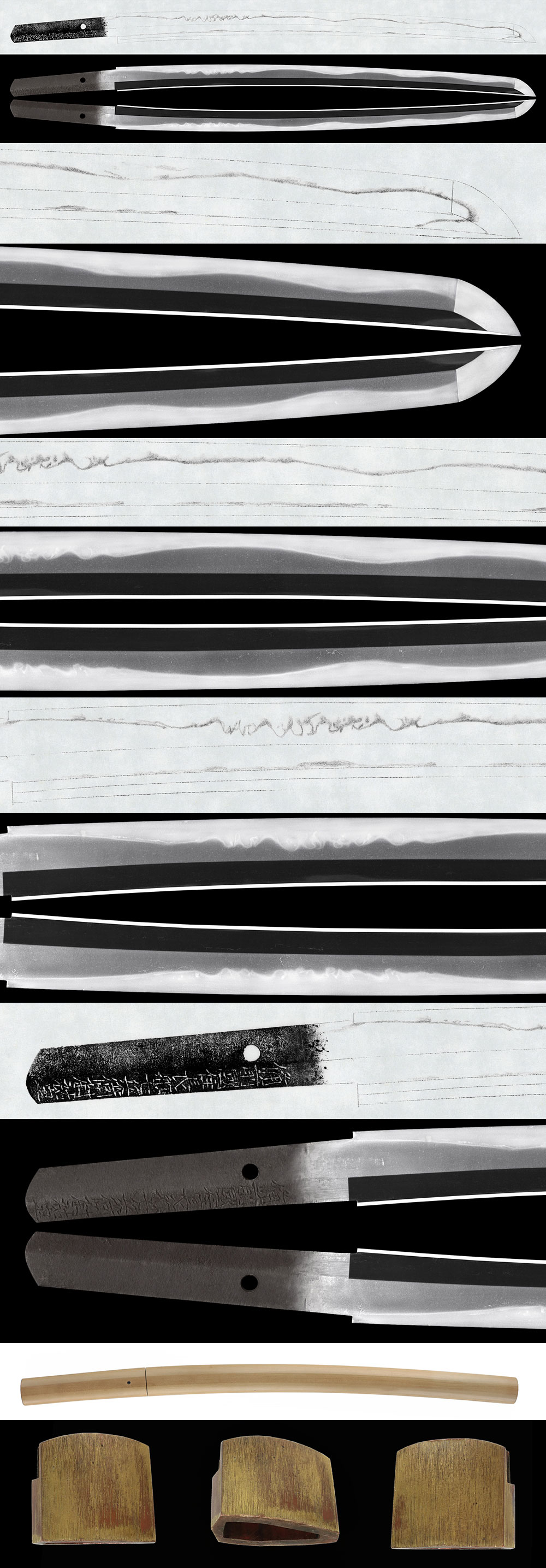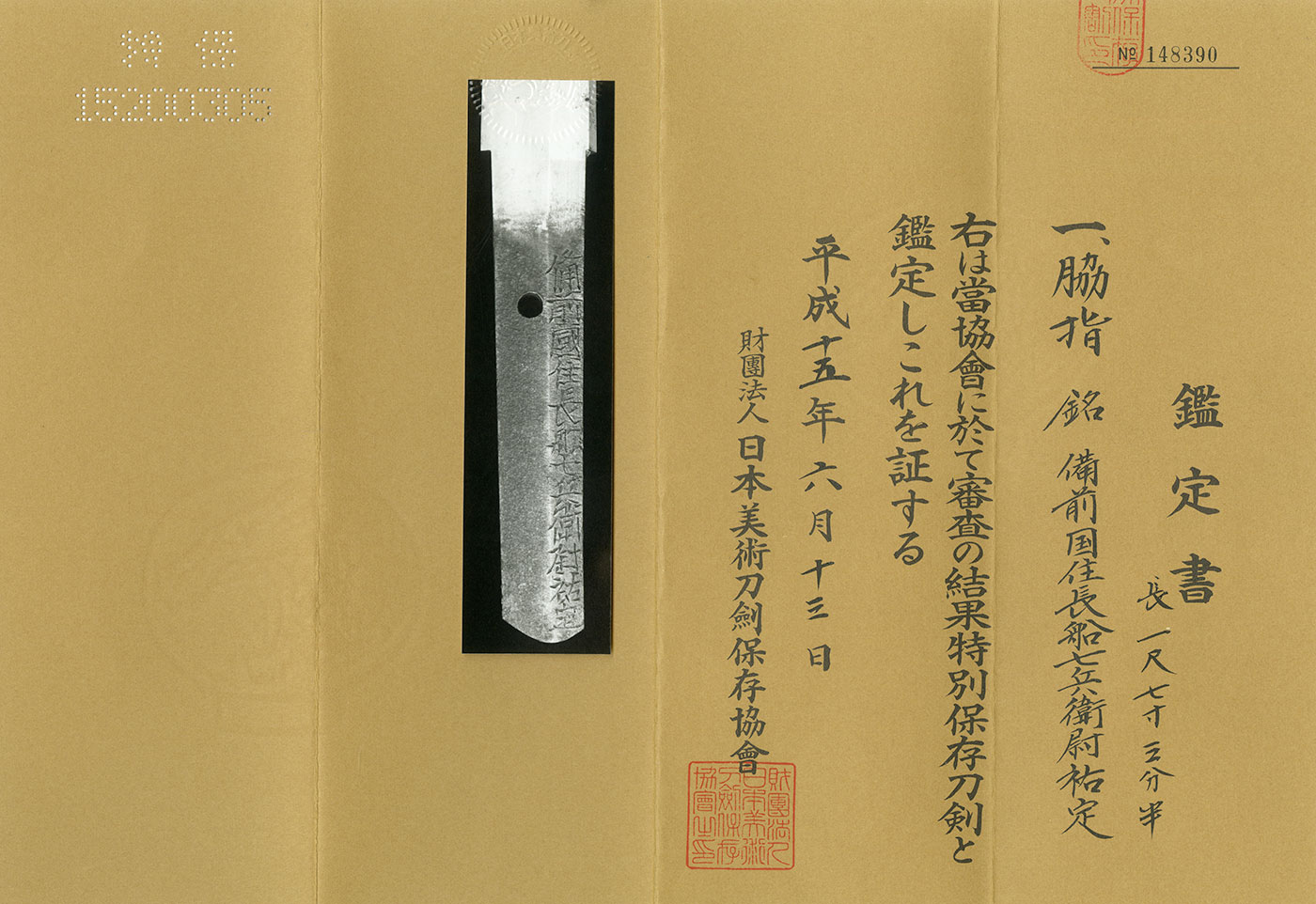Ordering number: 23379
Wakizashi In Shirasaya with Koshirae(NBTHK Tokubetsu Hozon Token)(NBTHK Tokubetsu Kicho Token)
Inscription (Mei): Bizen Kuni Ju Osadune Shichibeinojo Sukesada
Shinto: Chu-jyosaku: Wazamono: Bizen
We categorize our swordsmiths’ works as Juyo-saku (highest quality), Jojo-saku (excellent), Jo-saku (good), and Futsu-saku (average). This piece is ranked as Jojo-saku, indicating it is of excellent quality.
Polished
Habaki: Single-layered gold-colored brass.
Blade Length: 1 shaku 7 sun 3 bu (52.4 centimeters) or 20.63 inches
Curvature: 3 bu (0.91 centimeters) or 0.36 inches
Mekugi-ana (peg hole): 1
Width at the Base: 3.09 centimeters or 1.22 inches
Width at the Tip: 2.23 centimeters or 0.88 inches
Thickness: 0.74 centimeters or 0.29 inches
Weight: 600 grams
Era: Late Muromachi period
Shape: This wakizashi has a broad and thick shape, with minimal curvature and a typical kissaki (point). It retains a healthy initial edge, making it a very sound piece.
Jigane (forging pattern): The jigane shows well-forged itame hada (wood grain pattern) with fine ji-nie (surface grain) and appears to be beautifully crafted and well-tempered.
Hamon (temper pattern): The hamon starts directly from the habaki, and the pattern resembles mountains, with notare (wavy) elements appearing, and a small rounded return (bōshi) with yakidashi on the shinogi.
Characteristics:Bizen Kuni Ju Osadune Shichibeinojo Sukesada was the legitimate son of Sukezō Yotsushiro, and he is said to be the fifth-generation descendant of Keizō Kōzai. He passed away at the age of 98 in the second year of Enpō (1674).
A Word from Aoi Art: During the late Muromachi period, there was a substantial production of swords in the Mabizen region. However, due to river floods, most Bizen swords were almost completely lost during this period of conflict. As the peaceful Edo period began, the production of swords became increasingly scarce. Gradually, new swordsmiths emerged, such as Bizen Kuni Ju Osadune Shichibeinojo Sukesada, Ueno Daijō Sukesada, and Sōemon Jō Sukesada, who contributed to the resurgence of Bizen swords.
Historical Background: From the tumultuous period of the Muromachi to the peaceful Edo period, sword production became more challenging. Each swordsmith had to be resourceful and creative in crafting their pieces, striving to create swords that would sell well. The Bizen swords were known for their unique characteristics during this era.
NBTHK Tokubetsu Hozon Token paper
NBTHK Tokubetsu Kicho Token paper
Aoi Art estimation: whole Oshigata by Ayaka Tsuruta
(NOT including shipping fee to overseas)




